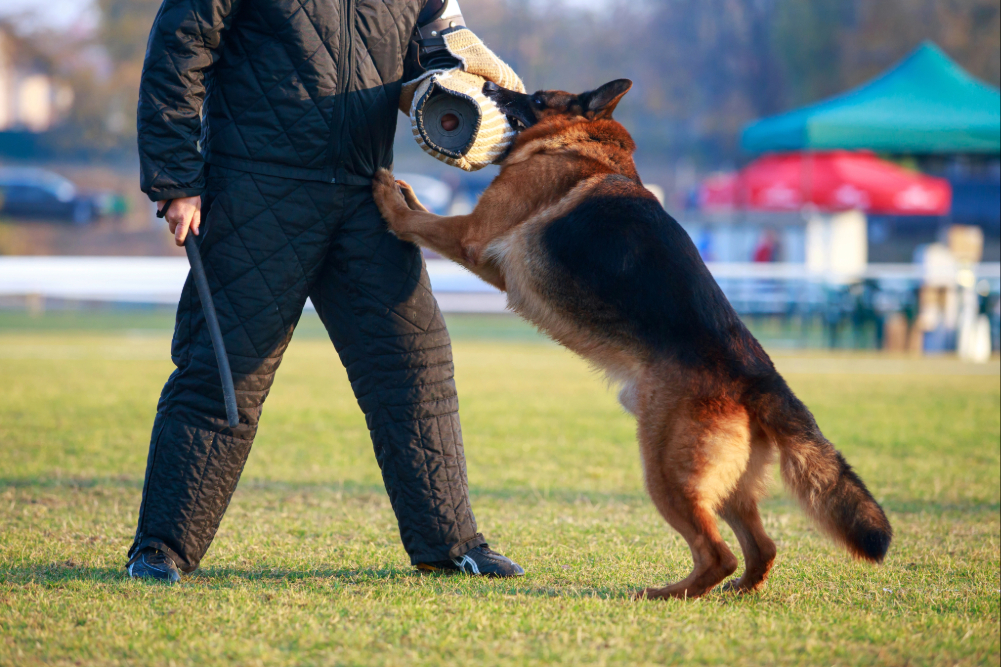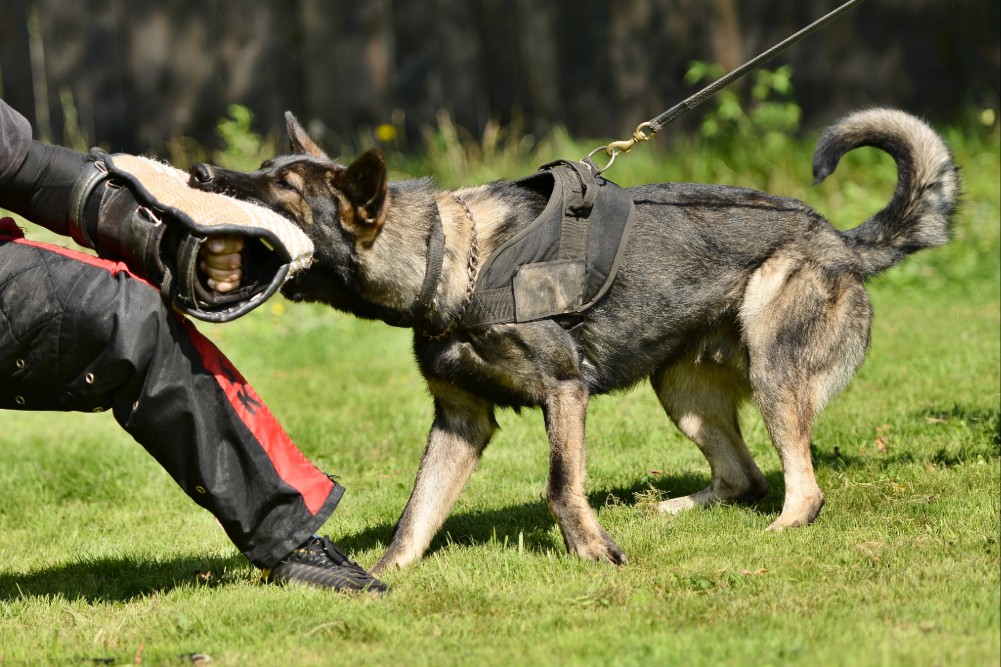
Service dogs change lives. They restore independence, safety, and confidence to people who face daily barriers because of disability. Many people are unsure how the qualification actually works, what conditions are eligible, or how tasks are defined, and they search for what disabilities qualify for a service dog to understand the rules. The truth is more inclusive than most expect.
The law focuses less on labels and more on impact: how a condition limits major life activities, and how a trained dog can perform specific tasks that mitigate those limits.
This guide explains the framework, outlines common qualifying disabilities across physical, sensory, medical, and psychiatric categories, clarifies what service dogs do in practical terms, and offers a clear path to deciding if pursuing a service dog makes sense.
The Core Standard: How the ADA Defines Disability
A disability is a physical or mental impairment that substantially limits one or more major life activities. Major life activities include things like walking, seeing, hearing, breathing, thinking, communicating, caring for oneself, and working.
The definition is intentionally broad because functional limits vary widely from person to person. The presence of a diagnosis alone is not the deciding factor. The key question is impact: Does the condition significantly limit everyday activities, and can a specifically trained dog perform tasks that reduce those limits?
Just as important, the law distinguishes service dogs from comfort animals. A service dog is individually trained to perform one or more tasks directly related to a person’s disability.
Comfort alone does not qualify. Emotional support animals can be wonderfully helpful for companionship, but without trained, disability-related tasks, they do not meet the legal definition of a service animal. This distinction matters for public access rights, housing, and travel.
The Second Standard: Task Work That Mitigates Disability
Every qualifying team must connect the dots between need and task. The dog’s training must address a functional problem. If dizziness causes falls, a dog might provide counterbalance and bracing. If panic attacks impair breathing and movement, a dog might perform deep pressure therapy and guide the handler out of a crowded store.
If low blood sugar creates risk, a dog might alert to scent changes and retrieve glucose. The task is the bridge between disability and daily function.
Physical and Mobility Disabilities
Many physical conditions qualify when they substantially limit walking, balance, strength, dexterity, endurance, or self-care. Examples include spinal cord injury, paralysis or paresis, multiple sclerosis, cerebral palsy, muscular dystrophy, Parkinson’s disease, stroke effects, severe arthritis, limb loss or difference, and chronic pain that significantly restricts movement.
People with these conditions often benefit from mobility service dogs trained for bracing, counterbalance on stairs or ramps, retrieving dropped items, opening doors, pressing elevator or access buttons, tugging drawers, pulling a manual wheelchair short distances, carrying small objects, and turning lights on or off.
The practical impact is significant. A handler who frequently drops keys or phones but has limited bending ability can keep working and living independently when a dog retrieves on cue. Someone with balance problems reduces fall risk with steadying support and early warning when gait becomes unstable.
A dog that interrupts freezing episodes in Parkinson’s by targeting or nudging can help a handler initiate movement safely. The through line is function: each trained skill meaningfully reduces barriers in daily tasks.
Sensory Disabilities: Vision and Hearing
People who are blind or have low vision work with guide dogs trained to avoid obstacles, stop at curbs, find doors and seats, and move safely through complex environments. People who are deaf or hard of hearing work with hearing dogs that alert to sounds such as smoke alarms, oven timers, door knocks, phones, or a child calling.
The dog’s job is to translate sound or environmental information into clear physical cues so the handler can act. These partnerships restore independent travel, increase safety in public and at home, and reduce the constant cognitive load of scanning for hazards.
Medical and Neurological Disabilities
Many medical conditions qualify when they limit major life activities or pose sudden risks.
Well-known examples include type 1 diabetes with hypoglycemia unawareness, seizure disorders, cardiac arrhythmias, postural orthostatic tachycardia syndrome (POTS), severe migraines, mast cell activation with anaphylaxis risk, and severe allergies requiring rapid intervention.
Tasks in this group include scent-based alerts to low or high blood sugar, seizure response, such as fetching medication or an emergency phone, activating a medical alert system, positioning the handler safely, retrieving water, and alerting a bystander for help. For allergy risk, dogs may detect specific odors, create space in crowds, or alert to known triggers in the environment.
Task reliability is the foundation. Scent-detection work requires rigorous, ethical training and proofing to varying environments. Seizure response work focuses on predictable, trainable behaviors that support safety before, during, and after episodes. The goal is not to “predict” every event, but to build dependable routines that reduce harm and speed recovery.
Psychiatric Disabilities
Psychiatric service dogs support people with disabilities such as post-traumatic stress disorder, panic disorder, severe anxiety disorders, major depressive disorder, bipolar disorder, obsessive-compulsive disorder, and autism spectrum conditions when these substantially limit daily activities. The key is again task work, not presence alone.
Examples of trained tasks include:
- Interrupting dissociation or self-harm behaviors
- Performing deep pressure therapy during panic to slow the heart rate and breathing
- Guiding the handler to exits or safe spaces during overload
- Waking someone from nightmares
- Performing a crowd buffer by standing behind to reduce startling
- Clearing the perimeter of a room to ease hypervigilance
- Reminding of medication
- Retrieving water or a phone during an episode
- Patterning “find a seat” or “lead me out” sequences
These task chains turn overwhelming moments into step-by-step routines. In a crowded store, a handler can cue the dog to lead out. During a panic surge, the handler can move through pressure, grounding, and then exit. The dog becomes a mobile, trained coping plan.
Developmental and Cognitive Disabilities
People with autism, intellectual disabilities, dementia, or traumatic brain injury may qualify when the condition limits safety, orientation, communication, or self-regulation.
Examples of trained tasks include:
- Tracking and reuniting if a person wanders
- Interrupting repetitive or harmful behaviors
- Providing tethering and controlled anchoring for a child who bolts
- Leading to familiar places
- Reminding and prompting for daily routines
- Supporting transitions by targeting and guiding
For adults with cognitive decline, dogs can cue for medication, guide back home from short walks, and alert caregivers.
Notable Non-Qualifiers: Emotional Support and Pet Training
It bears repeating that emotional support animals do not have public access rights reserved for service dogs. They can be deeply comforting and may have protections in some housing contexts, but they are not recognized as service animals without trained, disability-related tasks.
Therapy dogs, who visit hospitals or schools for others’ benefit, are not service dogs for their handlers. A well-trained pet, even with excellent manners, does not become a service dog unless trained to mitigate a specific disability.
How to Decide if a Service Dog Fits Your Needs
Start by mapping daily barriers. Write down the tasks that feel risky, exhausting, or nearly impossible. Then picture what a trained dog could do to change those moments in a practical way.
For example, if fainting spells make stairs unsafe, a dog trained for counterbalance and fetching help could reduce injury risk. If panic attacks cause avoidance of essential errands, a dog that performs deep pressure, guides to exits, and creates a crowd buffer could reopen access to daily life. This exercise highlights the connection between specific impairments and the tasks that address them.
Next, weigh lifestyle realities. Service dogs need ongoing training and maintenance, daily exercise, grooming, veterinary care, and consistent partnership work. In public, they function as working animals, not as pets on an outing, which requires steady handling and advocacy.
Think about the environments you frequent, your ability to learn handling skills, and the support you have from family or caregivers. A strong program evaluates both sides of the partnership: the dog’s task set and the handler’s capacity to cue, guide, and care for the dog.
Routes to a Service Dog
There are three main paths. Some people apply for a fully trained service dog from an organization. This route can involve long waitlists and significant cost, but the dog arrives with mature training and matching for the handler’s needs. Others choose owner-training with professional guidance, selecting a suitable dog and building task work over time with a trainer’s help.
A hybrid approach combines board-and-train phases for foundations and task conditioning with owner lessons for real-world handling. The right path depends on resources, timelines, and the complexity of task demands.
Service Dog Training, Customized to Your Needs
At Controlled K9, we prepare service dogs for real life – task work that matters, practiced in the places that matter. Programs cover medical alert and response, mobility assistance, hearing and guide work, psychiatric tasks, autism support, and allergy detection. Dogs learn public access, calm focus, and reliable task performance; handlers learn simple routines to keep skills strong.
We also include unlimited private sessions, giving ongoing guidance so progress continues and each team feels fully supported.
Choose owner‑assisted training with coaching and board and train phases, or get a fully trained service dog in Virginia placed to your specifications. Begin with an evaluation to define tasks tied to daily barriers, then train step by step toward dependable results.
When questions arise during your decision process, we can explain what disabilities qualify for a service dog and map those needs to concrete tasks.




Comments